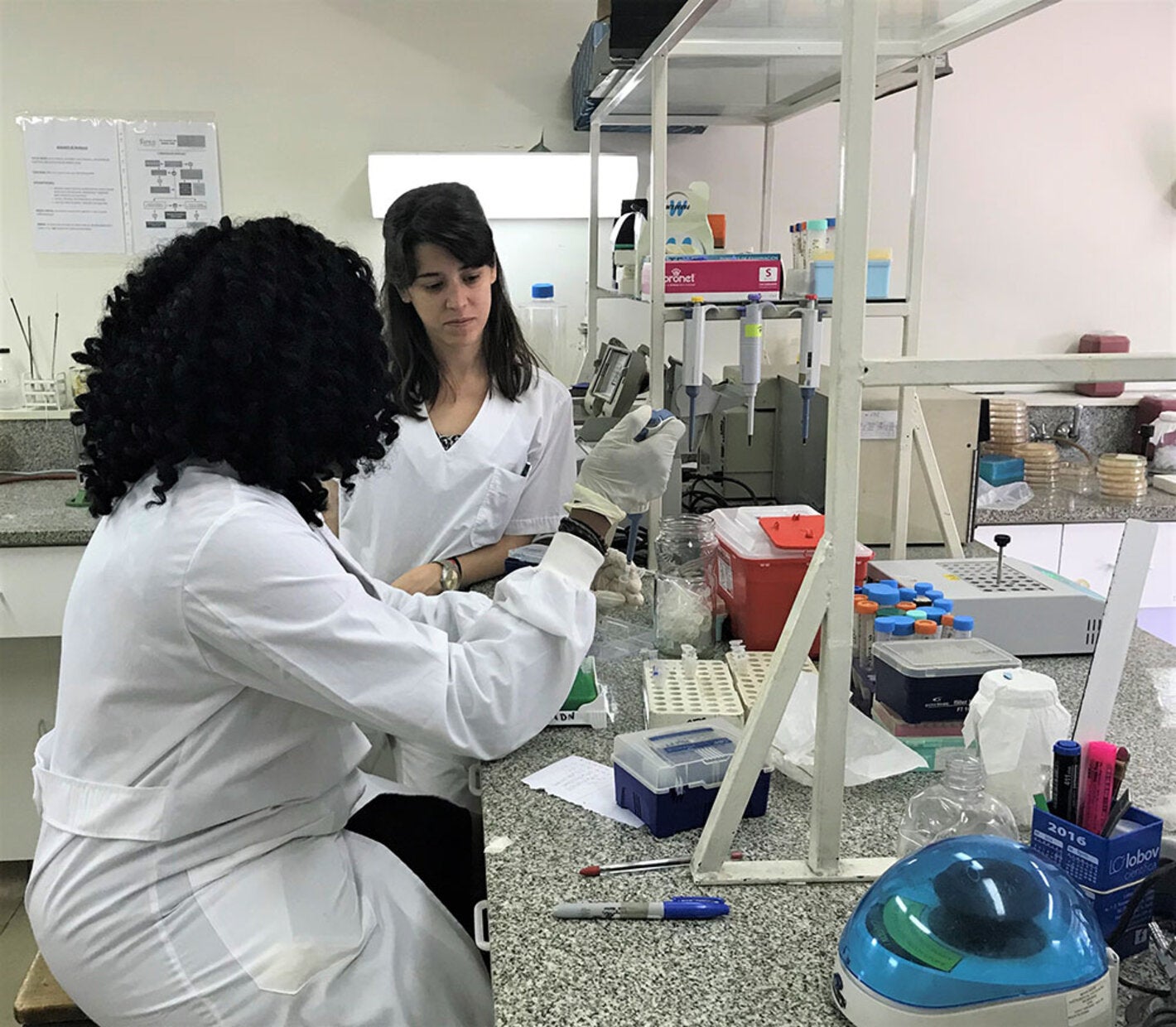
“Phenomenal”. “Timely”. “A terrific opportunity”. These are just some of the sentiments expressed by Starlene Jones and Katrina Harte, two Lab Technologists from the Best-Dos Santos Public Health Laboratory in Barbados, who spent just shy of a month in Buenos Aires, Argentina in November, at the Antimicrobial Service del Instituto Nacional de Enfermedades Infecciosas (INEI) de la Administración Nacional de Laboratorios e Institutos de Salud (ANLIS) Dr. Carlos G. Malbrán.
The training is an important feature of the Caribbean Cooperation in Health Development triangular project between the Government of Argentina, the Pan American Health Organization/World Health Organization (PAHO/WHO) and the Caribbean Community, to improve the capacity to address antimicrobial resistance (AMR), especially the diagnosis of AMR in clinical laboratories.
AMR occurs when microorganisms or germs (such as bacteria, fungi, viruses, and parasites) change when they are exposed to antimicrobial drugs (such as antibiotics, antifungals) so that these drugs can no longer kill the germs. In other words, the germs become resistant to antimicrobial drugs, hence the term “Antimicrobial Resistance”, or AMR. Microorganisms that develop AMR to several different drugs are referred to as "superbugs".
My internship experience at Malbrán Institute was phenomenal. It offered a terrific opportunity to not only advance our work at the Best-dos Santos Public Health Laboratory but will be beneficial for Barbados and the region. The process of watching microorganisms vs. antibiotics and figuring out what mechanism(s) were present every day, was riveting. The world is moving towards Polymerase chain reaction (PCR) tests to detect resistance genes. It was fascinating to not only observe but to participate in performing such an intricate test. This information can be used to interpret AMR profiles and better understand the global occurrence of certain resistant mechanisms."
Ms. Jones noted
They also carried out data analysis using WHONET, a software tool used for the surveillance of Antimicrobial Susceptibility. “It can provide pertinent information to detect trends and microorganisms of concern. We need to see what types of resistant mechanisms are present in order to better combat them and to have a better grip on antimicrobial stewardship so that we don’t develop superbugs,” she said.
Katrina Harte deemed the training as vitally important. “We not only did hands-on training in testing techniques, but we also learnt about future testing methods to better detect the superbugs, along with their resistant pattern. This training will strengthen our antimicrobial surveillance. We know that we have a lot of work to do but we look forward to implementing what we have learnt to do better in the future,” Ms Harte expressed.



